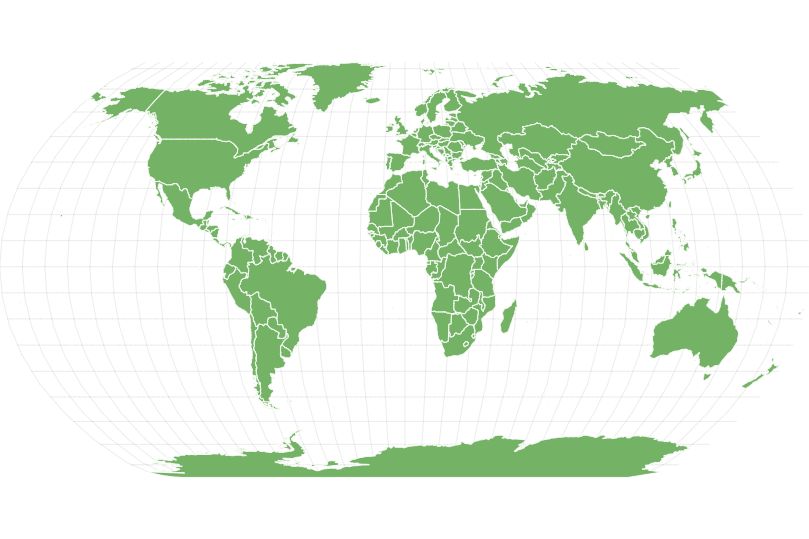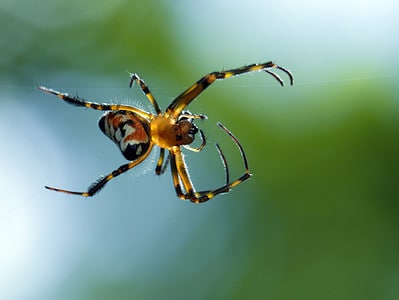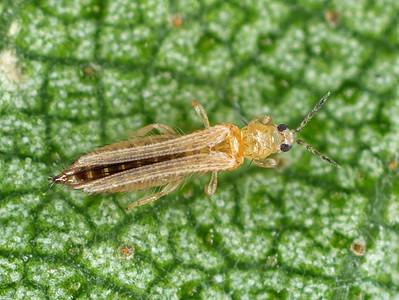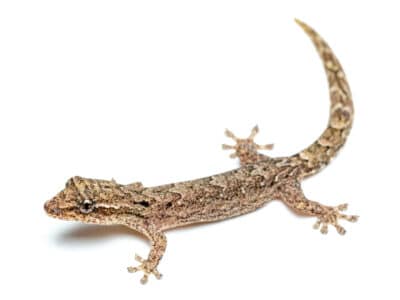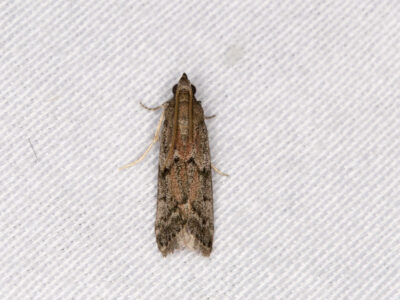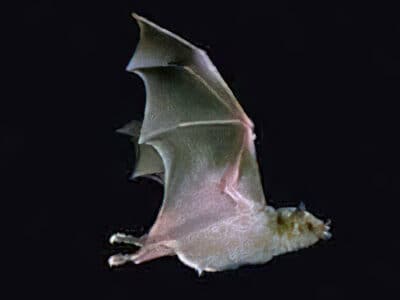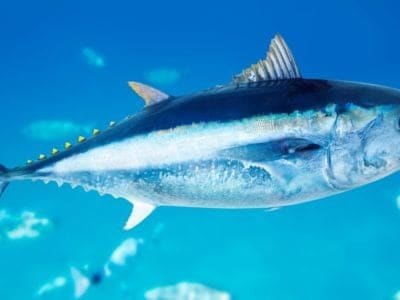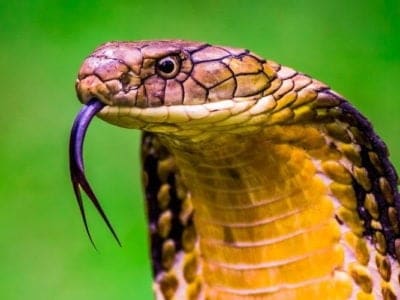Thanatosdrakon was one of the largest pterosaurs that lived in South America.
Advertisement
Thanatosdrakon Scientific Classification
- Kingdom
- Animalia
- Phylum
- Chordata
- Class
- Reptilia
- Order
- Pterosauria
- Family
- Azhdarchidae
- Genus
- Thanatosdrakon
- Scientific Name
- Thanatosdrakon amaru
Read our Complete Guide to Classification of Animals.
Thanatosdrakon Conservation Status
Thanatosdrakon Facts
- Prey
- Land and aquatic animals
- Fun Fact
- Thanatosdrakon was one of the largest pterosaurs that lived in South America.
- Most Distinctive Feature
- Thanatosdrakon had an abnormally large skull.
- Distinctive Feature
- Thanatosdrakon had an elongated neck.
- Other Name(s)
- Dragon of death
- Wingspan
- 23-29 feet
- Habitat
- Thanatosdrakon lived on a floodplain with temporal rivers.
- Diet for this Fish
- Carnivore
- Common Name
- Dragon of death
- Number Of Species
- 1
- Location
- South America
View all of the Thanatosdrakon images!
Thanatosdrakon (dragon of death) is a newly identified genus of pterosaur reptiles that lived in South America. The flying reptile lived during the Late Cretaceous about 86 million years ago. It is the oldest member of the Quetzalcoatlinae clade of reptiles to be discovered so far. The only species of this genus is Thanatosdrakon amaru.
Description & Size
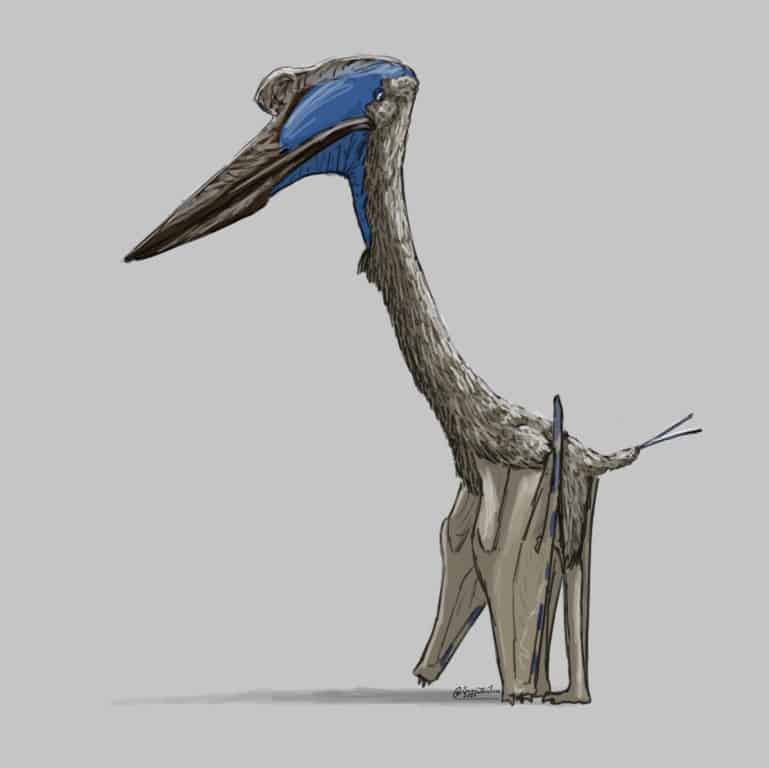
had an abnormally large skull and elongated neck.
©Sauriazoicillus / Creative Commons – License
Thanatosdrakon is a genus of pterosaur reptiles that lived during the Late Cretaceous period. The name of this genus is a combination of the Greek words “Thanatos,” which means death, and “drakon,” which means dragon. “Amaru,” the specific name of the only species of Thanatosdrakon, is a Quechuan word that means “flying serpent.” It is a reference to the Incan deity of the same name.
Thanatosdrakon was one of the largest pterosaurs that lived on the South American continent. It was the largest flying reptile in the world. It had a wingspan of 23 feet to 29 feet. That’s about the size of an average school bus. Like other Azhdarchids, Thanatosdrakon had an abnormally large skull. It had an elongated neck with a short and robust body. It had a massive beak that was toothless.
Diet – What Did Thanatosdrakon Eat?
Scientists don’t know a lot about Thanatosdrakon‘s diet. However, it is possible to infer its diet based on the habit of other pterosaur reptiles. Paleontologists believe Thanatosdrakon was a carnivore; considering its size, it must have been an apex predator.
The dragon of death had a large toothless beak. It most likely swallowed small prey, similar to how pelicans do. Thanatosdrakon dragon ate both land and aquatic animals. This giant pterosaur most likely hunted on the ground. Experts suggest that it probably stalked its prey in a way similar to marabou stork (Leptoptilos crumenifer).
Habitat – When and Where It lived
The Dragon of Death lived in Argentina during the Late Cretaceous period. However, since members of this genus could fly, they most likely had a more widespread distribution that covered an expansive territory on the South American continent.
Judging from the habitat where the fossil was discovered, Thanatosdrakon lived on a floodplain with temporal rivers. Thanatosdrakon was not a dinosaur. However, it lived alongside the dinosaurs, including sauropods like Antarctosaurus giganteus, the ornithopods, and theropod dinosaurs like the T-rex. Some contemporaneous non-dinosaurian species that lived in South America alongside Thanatosdrakon include some species of freshwater bivalves, Linderochelys, Rionegrochelys, and chelid turtles.
Threats And Predators
Considering the size of Thanatosdrakon, it was an apex predator. Although it was toothless, it had a powerful beak. The fact that it could fly would have made it difficult for other dinosaur species to prey on it. However, the dragon of death would have had to compete with other predator species that lived at the time for prey.
Discoveries and Fossils – Where It was Found
Thanatosdrakon is known from two fossils of Thanatosdrakon amaru, which paleontologists excavated during a construction project in Argentina. The fossils include axial and appendicular bones in excellent condition. The find also had fossil materials undescribed in giant azhdarchids until that time.
The discovery of Thanatosdrakon in good condition was a rare find, and scientists don’t expect to find many fossils like it in the future. Despite their massive size, pterosaurs are known to have thin and brittle bones. Only a few fossils have been found to date.
Thanatosdrakon fossils were discovered in the Plottier Formation in the Neuquén Basin in western Argentina. Some very interesting fossil discoveries have been made in this formation. This includes discovering one of the largest dinosaur fossils ever found, the Notocolossus dinosaur, which paleontologists uncovered in 2016.
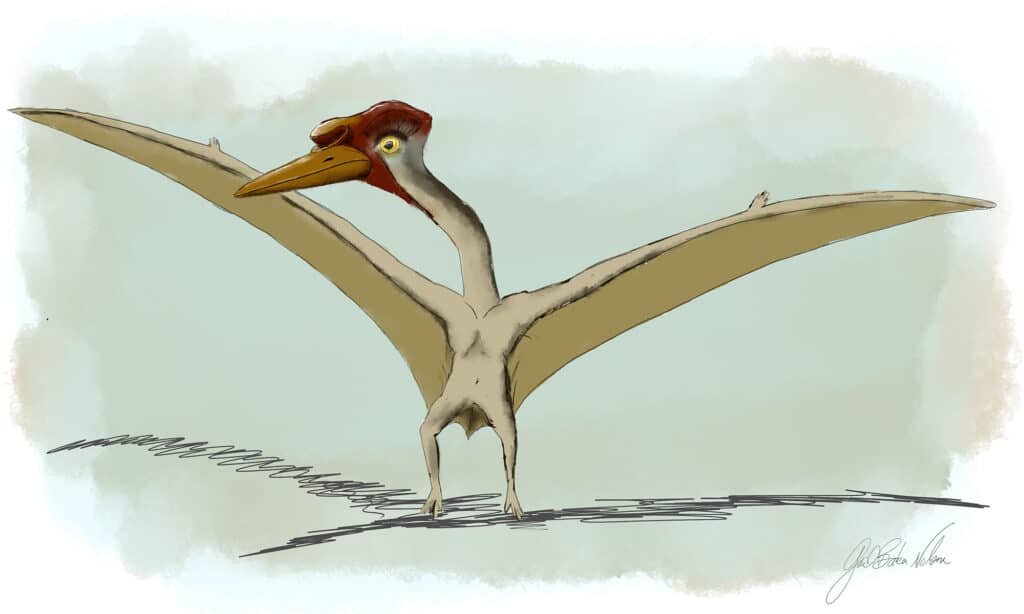
Extinction – When Did It Die Out?
Thanatosdrakon lived between 86 to 85 million years ago during the Late Cretaceous period. The species went extinct along with the non-avian dinosaurs during the Cretaceous-Paleogene extinction event, which occurred towards the end of the Mesozoic era.
Similar Animals to The Thanatosdrakon
- Pterodactylus-This was the first genus of flying reptiles ever discovered and named. It lived during the Late Jurassic period.
- Dearc sgiathanach– Dearc sgiathanach is a newly discovered pterosaur that lived in Scotland. It is roughly the same size as the largest flying birds of today.
- Ornithocheirid Tropeognathus– This is a giant pterosaur that lived in South America during the Late Cretaceous. It was about the same size as Thanatosdrakon in size.
Related Animals
View all 133 animals that start with TThanatosdrakon FAQs (Frequently Asked Questions)
Is Thanatosdrakon a Dinosaur?
No, Thanatosdrakon was not a dinosaur. It belongs to a group of flying reptiles, pterosaurs, that lived long ago alongside the dinosaurs.
How big was Thanatosdrakon?
Thanatosdrakon amaru, the only fossil of this species discovered to date, had a wingspan of about 23 to 29 feet. It was about the same size as a school bus and was as tall as a giraffe. The dragon of death was the largest pterosaur that lived in South America. Only Ornithocheirid Tropeognathus comes close to it in terms of size.
When was Thanatosdrakon Alive?
Thanatosdrakon lived about 90 to 86 million years ago. This was during the Late Cretaceous period. Scientists consider it the oldest member of the Quetzalcoatlinae family.
Thank you for reading! Have some feedback for us? Contact the AZ Animals editorial team.
Sources
- Cretaceous Research/Leonardo D.Ortiz David, Available here: https://www.sciencedirect.com/science/article/abs/pii/S0195667122000921
- Dinopedia, Available here: https://dinopedia.fandom.com/wiki/Thanatosdrakon
- Everything Dinosaur, Available here: https://blog.everythingdinosaur.com/blog/_archives/2022/05/25/argentinas-dragon-of-death.html
- Science News/ Sergio Prostak, Available here: https://www.sci.news/paleontology/thanatosdrakon-amaru-10842.html

